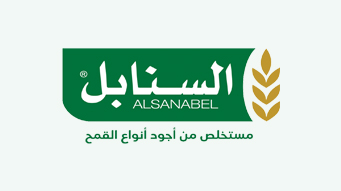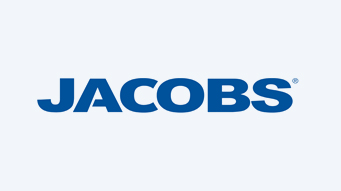
Artificial Lakes and Ponds Maintenance Guide
The importance of artificial lakes and ponds maintenance is highlighted by the fact that artificial lakes and ponds are good entertainment. They are an integral part of many agricultural operations. They can also enhance the aesthetic nature of gardens and parks and serve as a centerpiece for tourist attractions. However, without proper maintenance, water can form a buildup of sediment, plants, and garbage, making your water source smelly and look unpleasant.
The CareWater Foundation can help you maintain your artificial lake or pond. To keep it healthy and usable. Maintenance requires the right equipment, whether you are removing aquatic plants, aerating the pond, or cleaning the surface of the lake.
Also read:
- Important tips you will need when designing artificial lakes
- Stages of establishing artificial lakes
As proper establishment will save you more costs later and reduce the number of maintenance times.
Types of pond and lake maintenance equipment
Pond and lake maintenance is crucial if you want to enhance the beauty of the water while preserving its various environmental components. Lakes, ponds, and other bodies of water are integral parts of many ecosystems.
So, when a pond or lake becomes stagnant or polluted, there are a few ways you can maintain it. A wide range of tools are commonly used to maintain ponds and lakes, including the seven tools listed below.
Dredgers
Dredgers are machines that remove accumulated sediment from the bottom, sides, or banks of your lake or pond. Sedimentation is the process by which soil particles erode and deposit a layer on the bottom of a body of water. This can cause a number of problems in your pond or lake over time, such as a decrease in water depth. The buildup can even lead to water pollution, which poses environmental risks. When you need a solution to remove a massive buildup of sediment while keeping your water source healthy, dredgers are a popular solution.
Dredgers provide many benefits, such as:
- Creating a healthier ecosystem
- Preventing the growth of invasive plants
- Deepening ponds and lakes
- Removing stagnant sludge
Aerators
Aerators increase and stabilize oxygen levels in your pond or lake. They move water and break up the surface of the liquid to help it come into contact with air. Some natural sources of aeration include heavy rain and wind, but if the natural elements aren’t consistent, you can rely on mechanical aeration to get the job done.
The purpose of an aerator is to eliminate thermal stratification. Thermal stratification occurs when the surface of the water is cooler and less oxygenated compared to the deeper, warmer, oxygen-rich water levels. The division between the surface and the deeper water is called stratification. Aeration helps circulate the water to eliminate these temperature differences.
Without proper aeration, aerobic bacteria on the floor of your pond or lake won’t receive oxygen. If the bacteria don’t receive oxygen, they won’t be able to break down organic matter that falls from the oxygen-rich layers above. As a result, rotting organic matter—also known as slime—forms. Mud causes excessive algae growth, floating plants, and swarms of insects like mosquitoes.
Aeration pumps oxygen into your lake or pond, which benefits fish and other wildlife that live in the water. Aerating your lake or pond also:
- Improves water quality
- Improves ecosystem health
- Reduces mud
- Eliminates stagnant odors
- Prevents invasive plants
Weed Harvesters
Water management equipment like weed harvesters can help control the spread of weeds and aquatic plants in your lake or pond.
They are similar to bulldozers but are specifically used to remove aquatic weeds. Also known as a water mower, they are mounted on a dock designed for inland water management. The harvester is hydraulically propelled to move through clogged ponds and lakes.
The large floating machine has underwater reciprocating blades located on the harvester head. The blades cut and harvest various plants like reeds, weeds, and aquatic plants that are causing damage to your lake or pond. Removing plants from water bodies is known as water harvesting.
Once the grasses and reeds are cut, they are transferred to a conveyor system on the surface of the machine. The conveyor fills over time and stores the biomass, compacting it tightly. The plants are then transported to the shore of a lake or pond or to a truck for further use. If they are reused, the plants are compacted to remove any moisture.
Many uses for aquatic weeds include:
- Fertilizer
- Livestock feed
- Land reclamation
- Organic compost
- Pulp and paper
Removing excess vegetation is beneficial if it is overrunning your area and negatively impacting the water source environment. Using a weed harvester can also improve water quality.
Aquatic Filters
If you are looking to remove trash and debris from the surface of your lake or pond, then using an aquatic filter is the way to go. The device can also collect semi-submerged contaminants. It can capture plastic, cigarettes, cans, algae, bottles, trash, and wood. In addition to liquid waste such as oil, sewage, spilled drinks, and other liquids.
Filters are especially useful in areas that see heavy public traffic, such as zoos, parks, and family attractions.
Pond Cleaning
Using tools like skimmers makes ponds and lakes more attractive while reducing health risks and increasing environmental conservation.
Lake Shovels
Lake shovels are ideal when you need to harvest weeds on a small scale – making them more effective in ponds than larger lakes. So to clean ponds or
Residential lakes, this is often the route people take to remove weeds.
Using a lake rake is a straightforward process where you drop the device into the water and drag it to shore. The rake teeth will cut through the weeds and collect mud to help keep unwanted plant growth to a minimum.
Some factors you may want to consider are shaft length, material, flotation, and teeth.
Depending on the size of your pond, you may need a long-reach rake with a wide head for maximum reach. Equipment often comes with long ropes, so you can easily push the rake into the water and retrieve it.
You will want to find a rake that is made from high-quality materials that have also been treated with specialized finishes to resist corrosion and rust. Commonly used materials include aluminum, plastic, and steel. It is important to find a rake that is easy to push, pull, and throw into the water.
You will also want to consider its flotation. Do you need a rake that sinks to reach the bottom of the pond or floats to pick up weeds and surface debris? Longer teeth can pull out deeper vegetation but may move more sediment. Flat, wide teeth are ideal for covering large surfaces where weeds need to be collected.
Learn about the steps of treating lake water before and after installation, ensuring that you maintain the quality of your water for as long as possible. And avoid the need to repeat the maintenance process frequently.


























